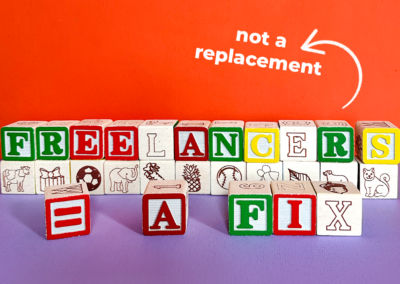There is much talk about the future of green jobs and not enough about the future of green work. The nuance matters as green jobs fit a somehow narrow definition while designing a future of work that is green by default will impact everyone.
The International Labour Organization (ILO) defines green jobs as those which “reduce the consumption of energy and raw materials, limit greenhouse gas emissions, minimize waste and pollution, protect and restore ecosystems and enable enterprises and communities to adapt to climate change.”
The same report by the ILO estimates that climate change action that aims at limit warming by 2 degrees Celcius by the end of the century has the potential to create 24 million jobs. And yes, we need every single one of them.
In the US, Scientific American estimates that the more conservative $25 carbon tax included in the Green New Deal can stimulate job growth by 1.4 million jobs each year in the decade between 2020 and 2030.
But what if green jobs are not enough?
A panel of climate scientists reported in “The Truth Behind the Paris Agreement Climate Pledges,” that we are far behind where we need to be to keep global warming well below the goal of 2 degrees Celsius, and that “almost 75% of climate pledges are partially or totally insufficient.”
The challenge ahead demands bigger ideas and a radical expansion of the concept of green jobs, so every employer and worker can play a direct role. Simply put, every job must become a green job, and we must put pressure on every employer to get with the program to stay relevant.
Beyond averting unimaginable economic and human toll, the strong link between sustainability and human wellbeing offers one of the most compelling reasons for employers to embrace and actively design the future of green work.
The World Health Organization (WHO) puts it simply: Our lives depend on a healthy planet. Perhaps the most relevant insight here is that the design changes we must implement to make work more green can also have a positive impact on our wellbeing and in turn in our productivity, sense of purpose, and performance at work.
Research by Deloitte Insights illuminates how wellbeing strategies are the single most important driver of employee satisfaction. An analysis of the top strategies shows a great potential to intersect with lifestyle choices that when adopted in the collective can create a significant dent in our carbon footprint while improving human wellbeing.
Take “increasing remote work opportunities,” and “introducing wellness behaviors in the day-to-day work.” Each present in the wellbeing strategies of 38% of respondents to Deloitte’s research. Each also directly connected to a potential future of green work when adopted en mass.
In car-centric societies like the US and the UK, transportation (of which the daily commute plays a central role) is now responsible for more carbon emissions than any other sector. The current Covid-19 crisis has demonstrated that in many sectors remote work is possible and even preferable, making an intentional shift to better and more widespread remote schemes almost a necessity for many.
Wellness behaviors that introduce physical activity in the context of commuting (e.g., cycling, walking) will also play a role in the future of work incentives that align the health of people, planet, and cities. Beyond the commute, for organizations that offer inhouse meals, switching to a plant-based menu will not only boost employee wellness but can also lead to significant reductions in greenhouse emission contributions.
By strengthening the link between employee wellbeing and the health of the planet we can envision a future of work that is more human at a time where the conversation is centered on the role of machines, AI, and automation. In fact, by taking a planet- and human-centric view of the future we can lean hard on our current and future technological progress and channel this energy into the right problems.
The same data processing technologies that are now threatening to replace millions of workers can be enlisted to design and develop the next generation of greenhouse gas inventories, allowing future workplace managers to optimize every single aspect of the business against strict emissions goals, from energy consumption to carbon credits, and more.
In many ways, the future of work is, in reality, a catalyst for our own human transformation. For the great majority of adults, work is where we spend the great majority of our waking hours, where we define ourselves, and where we find mastery, sustenance, and purpose. It must also become the connective tissue between the wellbeing of our planet and its inhabitants.



